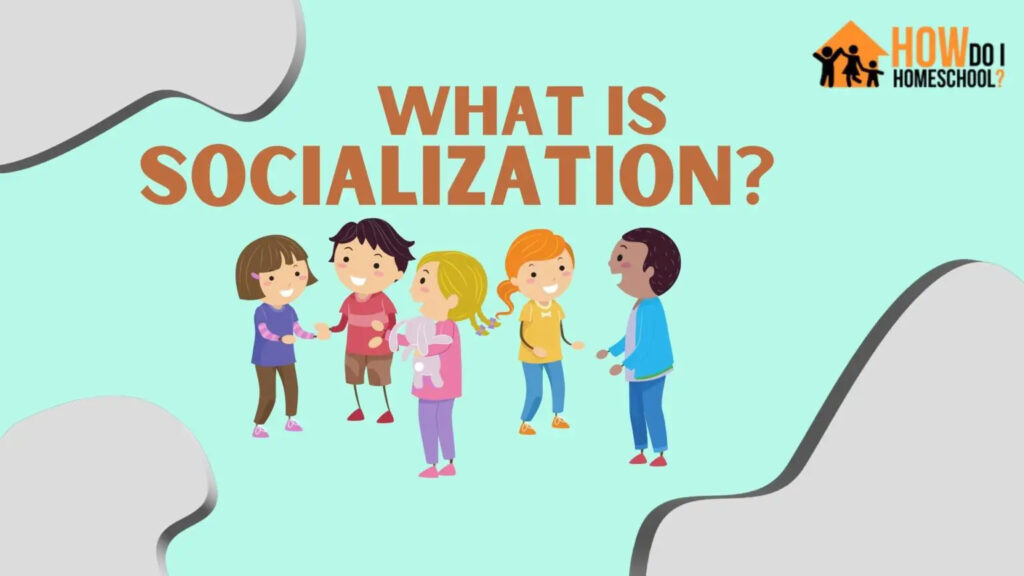
- September 10, 2023
- Distance Education, Education, Educational Philosophy, Higher Education, Online Ed, Open Learning
Rereading some of my works from decades ago, I read with anguish that the world has changed, not universities or education. We have replaced the blackboard and chalk with LCD screens, PowerPoint presentations, virtual toys, or sophisticated ways to plagiarize with ChatGPT. We make assumptions with Artificial Intelligence, but genuine education, with valuable exceptions, remains strongly guarded against change by the guardians of mediocrity, with obsolete information and vocational apathy, and students can acquire knowledge at a geometric speed that far surpasses the sad classes of the curriculum. Formal education has been a place for tradition and the perpetuation of values. Schools and universities teach conservation, not change, not innovation. They live in a contradiction between the past and the future.
Distance education or online education has undergone quite an evolution in terms of its definition, methods, and applications. The need for distance education has always been at the forefront. Online education is neither an isolated concept nor in its practice an isolated creation. It is the education of a special type, like types of education dependent on and influenced by values, opinions, experience, and external conditions.
Globalization has furthered the need for greater continuing education, as world systems seem to be generating a collective need for higher education. Enrollments have expanded dramatically worldwide in the last decades due to the expansion of secondary education and new approaches to lifelong learning. The permeability of the Internet has assured that people are not just citizens of a nation-state but of a world. This concept has forced countries to rethink the current conventional means of education and reconstruct methods providing greater access, keeping in mind the change in student profiles in higher education.
Also, society’s constantly changing needs require to be considered. Open and greater access, lower costs, international mobility, and the advent of a truly global market for higher education, especially with the expansion of online education, are all written up as favorable trends, mainly when governments cut back on higher education funding while demand for access increases worldwide. More and more university students in the most industrialized countries will likely study at a distance today. Graduate and corporate education at medium and large enterprises use online individualized instruction.
 Along with the technological trends, including digitalization, big data and artificial intelligence, distance/online education and open education must first be differentiated and defined. Online distance education is a didactic system in which teaching (instructing) behaviors take place apart from learning behaviors. In this way, communication between the professor, mentor or facilitator, and the student remains differentiated in time (synchronous or asynchronous) and in space. The root of instruction has always tended towards self-directed learning that a student does for himself, by himself. This is specifically what sets distance education apart from conventional means. The learner (or learners) and the teacher are separate throughout the learning process.
Along with the technological trends, including digitalization, big data and artificial intelligence, distance/online education and open education must first be differentiated and defined. Online distance education is a didactic system in which teaching (instructing) behaviors take place apart from learning behaviors. In this way, communication between the professor, mentor or facilitator, and the student remains differentiated in time (synchronous or asynchronous) and in space. The root of instruction has always tended towards self-directed learning that a student does for himself, by himself. This is specifically what sets distance education apart from conventional means. The learner (or learners) and the teacher are separate throughout the learning process.
Nevertheless, we refer to this concept as that of “teaching” as a synonym of “instruction” and not of “education”. Why is this distinction so important? As I discussed in multiple publications, we often find numerous educational experiments that misinterpret and confuse scientific pedagogy with the science of pedagogy or, better stated, with educational technology. To further the discussion about interactive distance or online systems such as teleprocessing, telecommunications, and intelligent information systems within university structures, it is important to first establish a philosophical and empirical base of open, distance, online or virtual education.
 To educate is to form (cognitive and affective domains) and teach; instruction rests on an intellectual level and formation blends into a personality, manifesting in a student’s overall behavior. Within this line of thinking, Distance or Online Education merely educates at a distance as opposed to face-to-face. The common denominator in both methodologies is education, not instruction or training. Other more restricted modalities include distance instruction, auto-didactic methods, or distance training. However, although instruction requires certain formation activities, goals differ, and accomplishments will never be equal.
To educate is to form (cognitive and affective domains) and teach; instruction rests on an intellectual level and formation blends into a personality, manifesting in a student’s overall behavior. Within this line of thinking, Distance or Online Education merely educates at a distance as opposed to face-to-face. The common denominator in both methodologies is education, not instruction or training. Other more restricted modalities include distance instruction, auto-didactic methods, or distance training. However, although instruction requires certain formation activities, goals differ, and accomplishments will never be equal.
On the other hand, what differentiates a university from a training center is that the university is oriented toward the integral development of human beings in accordance with their environment, not only through the teaching of skills and abilities customary of training centers but also through social and cultural teaching enhancing the growth of the person and the development of ethical conduct.
Appearances of new psychological processes and information and communication technologies add sophistication to teaching methodologies. This was the case in the 50s with correspondence education and in the 70s with educational television using the concept of open or distance education, and at the end of the twentieth century with the explosion of computer-assisted education, or recently with the approach of virtual mobile devices learning packages or the high intrusion of AI aids as ChatGPT. However there was a major misconception about distance education when it was labeled as open education. For example, distance universities, as well as face-to-face universities, are open or at least should be open.
Open education consists of the reason and essence for education, as it would be inadequate to contrast the term open education with closed education. It would be impossible to understand any type of closed education. Open education could be characterized by the removal of restrictions, exclusions, or privileges; the accreditation of a student’s prior experience; the flexibility of time management; the student and faculty civic engagement; sharing and discussing knowledge; and the substantial changes in the relationship between student and professor, mentor or facilitator. It represents a true conception of achieving academic socialization. Distance education, however, is defined as a type of education transferred through didactic means that allows individual students the responsibility of their own learning without attending regular face-to-face scheduled classes.

Because of this, even when a university modifies age limits and entrance requirements and grants credit for prior learning and work experience, it does not qualify as an open system of learning since only policies and norms have been changed, but the classical ideology of the university remains.
In addition, there is nothing farther from an open form of learning than many of the open, distance or virtual universities that exist in the world today. Many of these institutions are closed to ‘education’ as a formative process, closed to learning through experience or self-learning, closed to time flexibility, and closed to innovative didactic methods by substituting the professor with textbooks, reading packages, or programmed instruction guidelines, accompanied by a tutor in more precarious situations. Many other considerations could be made around this misconceived definition that has been applied to a simple didactic methodology and not to a new conception of education as has been implied. The truth is that open education exists (not necessarily open institutions), but its patrimony belongs to any educational institution that complies with the true goals of education.
Education as a general concept should not only include teaching or instruction, if not principally, social and cultural learning, as an independent act of an individual and of interaction with his or her peers. It is in the educational process of the person and the society to converge to a genuine education to create experiences. Nevertheless, as stated by John Dewey, not all experiences are equally educational. Thus, one of the central problems of education is the selection of experiences that can result in “evolution, growth, or progress” in their most widely held connotations.
The professor, lecturer, facilitator, or teacher has failed to help the student create experiences and select those, through “continuous interaction” can modify scientific, technological, humanistic, or social behavior toward desirable goals. In part, this failure is a product of their preparation and in a major way, of the role of the professor of our time, which has been converted into a transmitter of information and not of formation. It represents, in some manner, the equivalent of a text, audio, video, electronic material or computer, or another medium of instruction, most of the time with obsolete information.
 Instruction is the planning, selecting, and transmitting information about our environment and ourselves. Education implies all of this and directs formation and self-formation towards cultural survival, an objective that can only be attained through instruction, the generation and selection of experiences, and the interaction with members of the species and the culture that they form a part of.
Instruction is the planning, selecting, and transmitting information about our environment and ourselves. Education implies all of this and directs formation and self-formation towards cultural survival, an objective that can only be attained through instruction, the generation and selection of experiences, and the interaction with members of the species and the culture that they form a part of.
Within this order of ideas, we can synthesize as follows the different elements and hypotheses on which we base our analysis:
- There exists a philosophical and operational difference between education and instruction.
- When there is a systematic limit or elimination of interaction between the members of an educational program, we can distinguish between two types of instruction: (a) face-to-face instruction and (b) distance or online education. Different types of blended learning can be generated as a combination of both.
- The majority of experiences that refer to distance education (or which are referred to as distance or online education) relate to non-face-to-face instruction and no interaction between teacher and student. Defining these experiences as “distance learning” or “distance instruction” would be preferable.
- Distance learning only meets one of the requirements of education, it becomes necessary to create other programs that compensate for this deficiency to obtain genuine “distance education” which involves what I defined as “academic socialization”.
Buy in one university model or in the other, how are students benefiting from traditional education being offered to millions of students flocking to universities? Would we be preparing the students for a world of twenty years ago or for a complex and almost unpredictable world of tomorrow? Tomorrow always starts today. As knowledge becomes more complex, the manner of transference also becomes more complex. In other words, many times knowledge is outdated or teaching is partial and fragmented. The system is out of sync; teaching for a non-realistic world. It is here where the university has a colossal transformation goal.
Rereading some of my works from decades ago, I read with anguish that the world has changed, not universities or education. We have replaced the blackboard and chalk with LCD screens, PowerPoint presentations, virtual toys, or sophisticated ways to plagiarize with ChatGPT. We make assumptions with Artificial Intelligence, but genuine education, with valuable exceptions, remains strongly guarded against change by the guardians of mediocrity, with obsolete information and vocational apathy, and students can acquire knowledge at a geometric speed that far surpasses the sad classes of the curriculum. Formal education has been a place for tradition and the perpetuation of values. Schools and universities teach conservation, not change, not innovation. They live in a contradiction between the past and the future. With every generation, there is more information and less formation, less education. Science and technology systems take mammoth leaps while university systems take minuscule steps, therefore enlarging the gap. The appropriate integration of both systems, face-to-face and distance education can contribute to reducing the gap.
References
Escotet, Miguel A. (2023). La universidad del futuro para una educación en red y a lo largo de la vida. En Santos Rego, M.A., Lorenzo Moledo, Mar y García Álvarez, Jesús (Eds.). La educación en red. Una perspectiva multidimensional. Barcelona: Editorial Octaedro, 161-192.
Escotet, Miguel Angel (2003). Quality of Higher Education in the World. Reform and Innovation in Higher Education. UNESCO, Paris.
Escotet, Miguel Angel (1995). A Teacher-Centered University Education: Is the Core University Culture Different between Developed and Developing Countries? Proceedings of the Comparative and International Education Society Annual Meeting, Boston, Massachusetts.
Escotet, Miguel Angel (1988) Adverse Factors in the Development of an Open University in Latin America. In Sewart, Keegan and Holmberg (Eds.) Distance Education: International Perspectives. New York: St. Martin´s Press, 141-156. (First Edition in 1983.)
_______________________________
©2023 Miguel Angel Escotet. All rights reserved. Permission to reprint with appropriate citing.